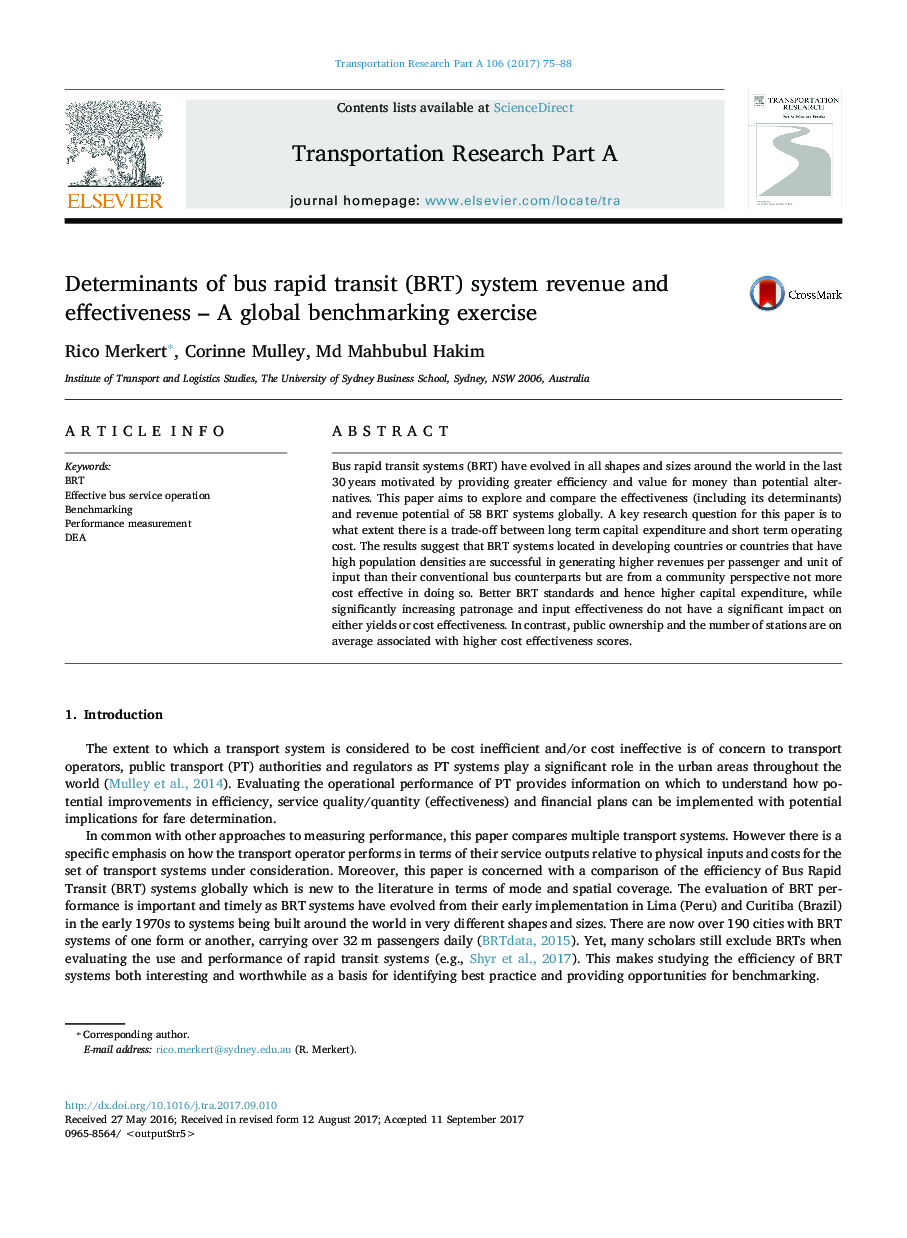| Article ID | Journal | Published Year | Pages | File Type |
|---|---|---|---|---|
| 6780604 | Transportation Research Part A: Policy and Practice | 2017 | 14 Pages |
Abstract
Bus rapid transit systems (BRT) have evolved in all shapes and sizes around the world in the last 30Â years motivated by providing greater efficiency and value for money than potential alternatives. This paper aims to explore and compare the effectiveness (including its determinants) and revenue potential of 58 BRT systems globally. A key research question for this paper is to what extent there is a trade-off between long term capital expenditure and short term operating cost. The results suggest that BRT systems located in developing countries or countries that have high population densities are successful in generating higher revenues per passenger and unit of input than their conventional bus counterparts but are from a community perspective not more cost effective in doing so. Better BRT standards and hence higher capital expenditure, while significantly increasing patronage and input effectiveness do not have a significant impact on either yields or cost effectiveness. In contrast, public ownership and the number of stations are on average associated with higher cost effectiveness scores.
Related Topics
Physical Sciences and Engineering
Engineering
Civil and Structural Engineering
Authors
Rico Merkert, Corinne Mulley, Md Mahbubul Hakim,
